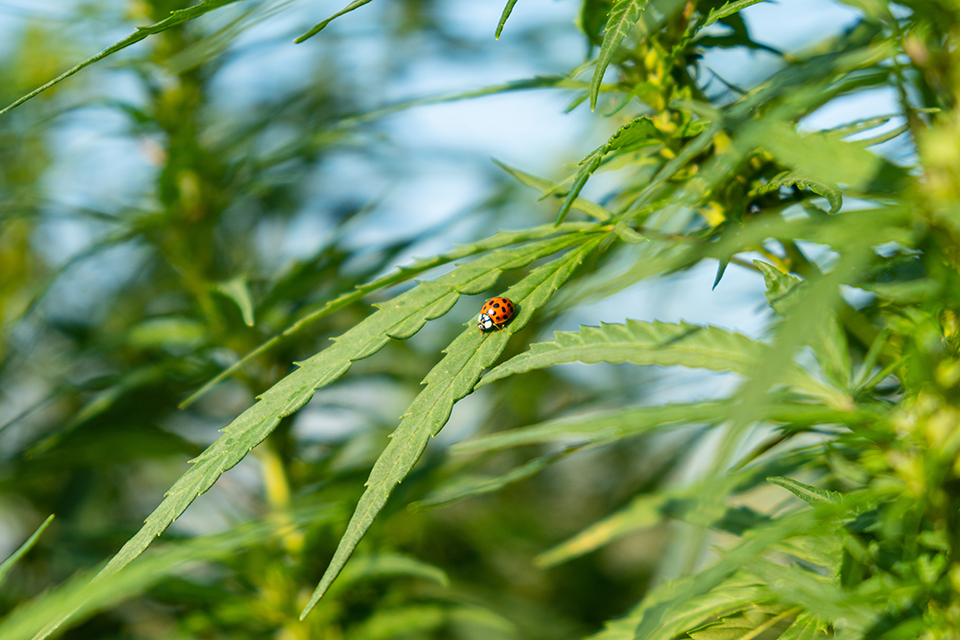
Managing pests effectively promotes healthy cannabis plants. Growers can enhance plant growth and resilience by using beneficial insects instead of chemical pesticides. Ladybugs and predatory mites are among the best options for keeping cannabis plants thriving in a pest-free environment.
The Role of Beneficial Insects in Cannabis Cultivation
Beneficial insects serve as natural allies in maintaining healthy cannabis plants by controlling pest populations. As predators of harmful pests, they reduce the reliance on chemical pesticides, which can leave harmful residues and impact the environment. Introducing these insects into your grow promotes a more sustainable and eco-friendly cultivation process.
Utilizing beneficial insects also prevents pests from developing resistance, a frequent issue with repeated chemical pesticide use. By fostering a balanced ecosystem where these insects regulate pest numbers, growers create a more resilient environment. This approach safeguards plants while promoting cultivation practices that align with organic growing principles.
The Best Bugs or Insects for a Cannabis Grow
Selecting the appropriate beneficial insects can greatly enhance cannabis cultivation. These insects effectively control harmful pests while contributing to a healthier and more balanced growing environment.
Ladybugs
Ladybugs are a favorite among cannabis growers for their ability to control aphid populations. These colorful beetles, with their distinctive red and black spots, are efficient predators of soft-bodied insects that threaten cannabis plants. By keeping pest numbers in check, ladybugs help maintain plant health and productivity.
To successfully introduce ladybugs to your growing area, release them in the evening when it's cooler. This timing helps them settle in without immediately flying off. Ensure your growing space has enough moisture and a variety of plants, as ladybugs are more likely to stay if they have a steady food supply and a suitable habitat.
Predatory Mites
Predatory mites are a smart choice for keeping your cannabis plants healthy. These tiny hunters are particularly good at tackling spider mites and thrips, two pests that can cause serious damage. Predatory mites offer a natural and effective pest control solution by preying on these nuisances.
To use predatory mites in your grow, first identify the pest you're dealing with, as different mites target different pests. For example, Phytoseiulus persimilis is great for spider mites, while Amblyseius swirskii handles both thrips and whiteflies. Once you've picked the right species, release them onto your plants in the early morning or late afternoon when it's cooler and more humid, which helps them thrive.
To keep your predatory mites active, make sure your growing environment meets their needs. Maintain good humidity levels and avoid broad-spectrum insecticides that might harm them. With the right conditions, these mites will patrol your plants, keeping pests in check.
Parasitic Wasps
Parasitic wasps are a valuable ally in managing pests. These small insects target caterpillars, which can cause significant harm to cannabis plants. Unlike their larger wasp relatives, parasitic wasps are non-aggressive and focus solely on pests, leaving beneficial insects and humans unharmed.
Wasps control pests by laying eggs inside or on caterpillars. As the larvae grow, they consume the host, effectively reducing pest numbers without chemicals. This precise method ensures that only harmful pests are targeted.
Introduce parasitic wasps at the first sign of caterpillars to maximize their effectiveness. They work best when deployed early to prevent infestations from worsening. Maintain moderate temperatures and avoid pesticides that could harm them to support their activity.
Nematodes
Nematodes, tiny worm-like creatures, are invaluable for managing soil pests. They target root pests like root aphids and fungus gnats, which can harm cannabis roots and stunt growth. Growers can tackle these issues without chemicals by using nematodes.
To use nematodes, choose the right type for your pest problem. For instance, Steinernema feltiae works well against fungus gnats, while Heterorhabditis bacteriophora targets root aphids. These nematodes arrive dormant and need to be mixed with water before application. Apply the solution to your plants in the early morning or late afternoon when it's cooler, as nematodes are sensitive to heat and light.
Keep the soil moist after application to help nematodes thrive and hunt pests. Regularly check soil moisture and avoid chemical pesticides that might harm them. With the right care, nematodes will settle in the soil, offering ongoing protection against root pests.
How to Introduce and Maintain Beneficial Insects
Integrating beneficial insects into your cannabis grow requires thoughtful preparation. First, evaluate your growing environment to ensure it meets the needs of these insects. Ladybugs, for instance, need a moist setting, while predatory mites thrive in cooler, humid conditions.
Timing is key when introducing these insects. Release them when pest numbers are manageable, allowing them to establish a presence before pests become a bigger problem. Early in the growing season or at the first sign of pests is ideal.
To keep these insects thriving, steer clear of broad-spectrum pesticides that could harm them. Instead, aim for a balanced ecosystem where they can flourish. Regularly check both pest and beneficial insect populations to maintain this balance. A diverse plant habitat can also help, as it provides alternative food sources and shelter.
Pest Management in Cannabis Growing
Using beneficial insects in cannabis cultivation offers many benefits, from reducing chemical pesticide use to fostering a healthier growing environment. Understanding the roles of ladybugs, predatory mites, parasitic wasps, and nematodes helps home growers manage pests effectively and improve plant health. Natural pest management techniques align with sustainable and organic practices, leading to more robust cannabis plants.
Kind Seed Co provides reliable information on natural cultivation methods, empowering growers to make informed decisions and maintain healthy crops.






